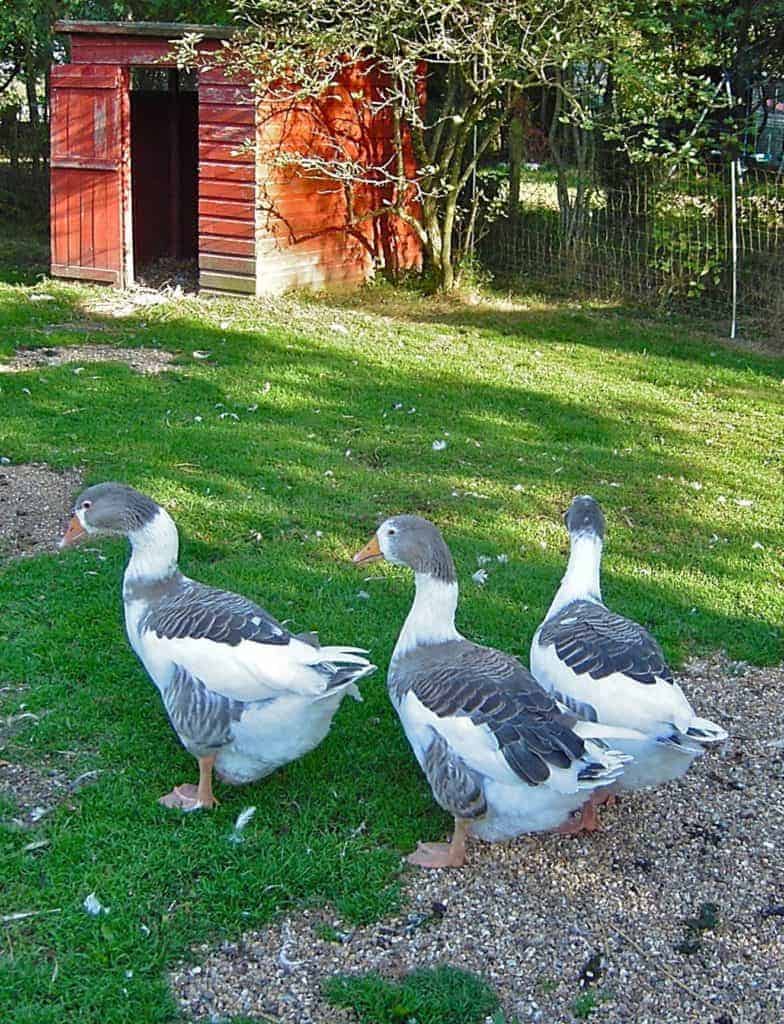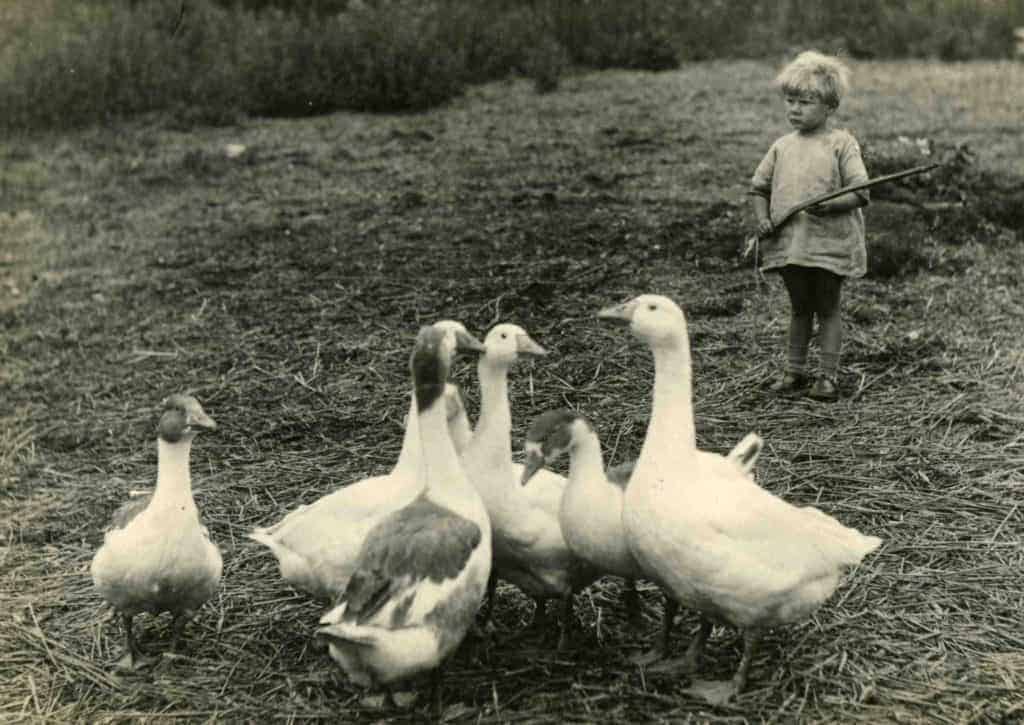West of England Goose


Medium breed
Domesticated Greylag Goose Anser anser
The distinctive feature of the West of England Goose is that it is autosexing – not only are the adult male and female distinct but it is possible to sex goslings at hatch, as the females have grey patches on the beak rather than the plain pale orange of the male. Adult males are white, but may have the odd grey feather, and females have a saddleback grey and white pattern, with grey on the head and neck.
Somewhat larger than the Pilgrim, this is a medium goose, with ganders up to 9 kg and geese up to 8 kg. Although only first standardised in 1999, the breed is an ancient one, similar birds being found in farmyard stock throughout the UK and particularly in the West Country.

The genetics of this colour form have not been fully explored.
In addition to the Shetland, similar autosexing birds are found in France (the Normandy Goose) and in the USA (Cotton Patch).
One of only four standardised British indigenous breeds, the West of England is a priority breed on the Rare Breed Survival Trust‘s watchlist.
The West of England is classed as a Medium breed. The full-grown bird should have a dual lobed paunch.

Like other medium breeds, these are hardy birds which grow quickly and do well as meat producers. They are quite calm and will become confiding with human contact. Laying 30-40 eggs a year, West of England Geese rear their own young readily.
FURTHER READING
Chase, J and Holzhauer, B. (2021). West of England Gänse, Geese.ch The genetics of West of Englands.
Share this page